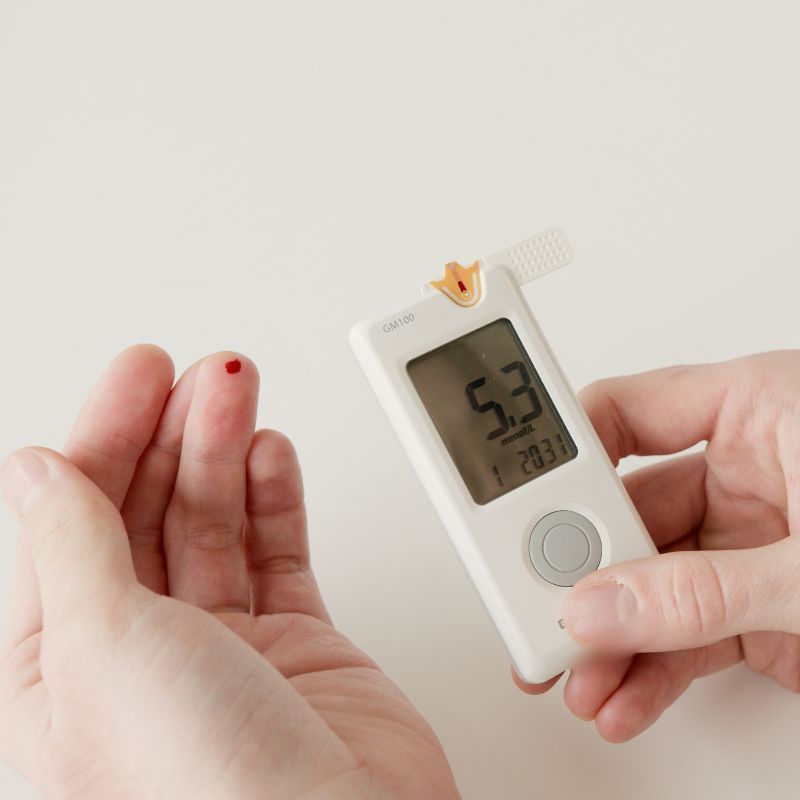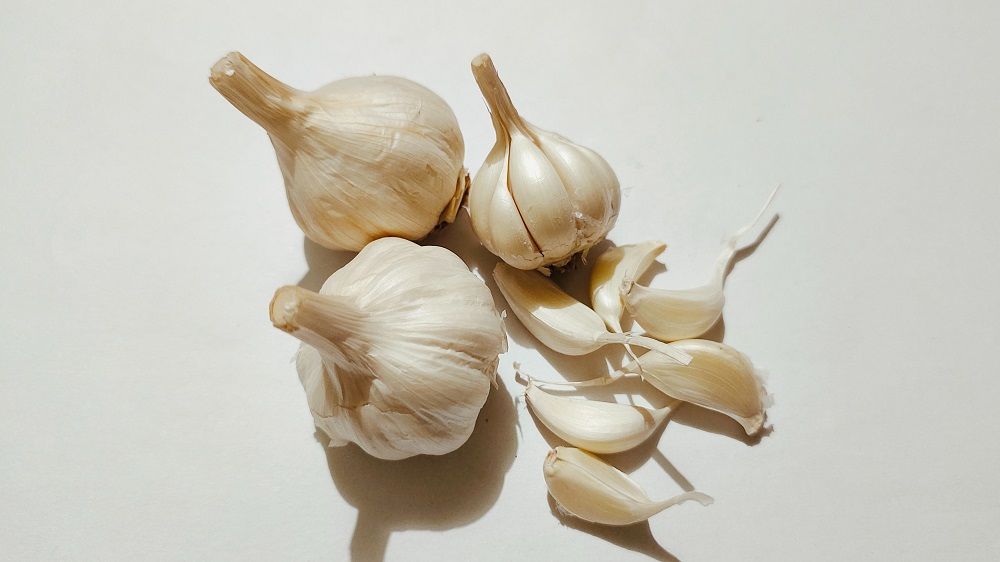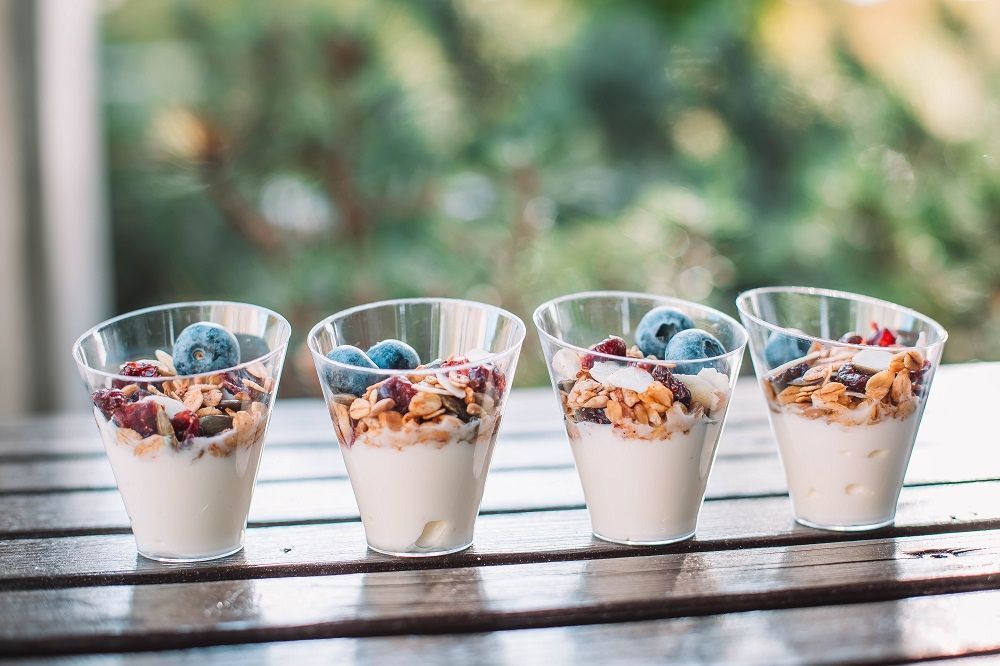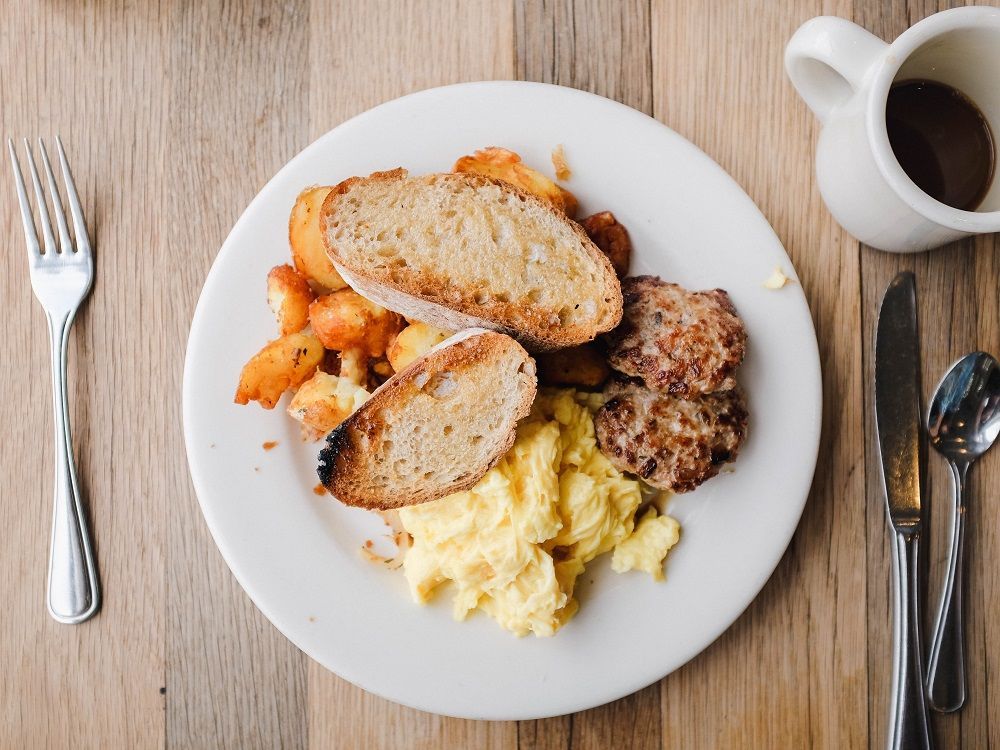

High blood sugar, or hyperglycemia, is common. An estimated 45% of adults in the United States have either prediabetes or diabetes. High blood sugar over time puts you at risk for complications, including heart disease and stroke, as well as kidney, eye, and nerve damage. While many people will require medications to control blood sugar, several lifestyle changes can help lower blood sugar naturally.
This article will discuss 12 ways to lower glucose levels naturally, many of which also have benefits on overall health.
Try these 12 easy ways to lower blood sugar levels naturally
Limit carbs

Carbohydrates are a type of nutrient that are broken down and absorbed as sugar in the body. Certain foods have high levels of carbs, including:
- Sweets like pastries and candy
- Grains like bread, pasta, and rice
- Juices and sodas
- Fruits and starchy vegetables like potatoes
Carbs can be classified as simple or complex. Simple carbs are quickly broken down and absorbed, and thus quickly raise blood sugar. On the other hand, complex carbs are more slowly absorbed and lead to a slower increase in blood sugar.
Changing diet can have a drastic effect on blood sugar levels. Limiting carbohydrates and replacing simple carbs with complex carbs can lower blood sugar. This could involve swapping out foods like juices, sodas, and pastries with high-fibre vegetables, and refined grains with whole grains.
A low-carb diet can help reduce the amount of blood sugar-lowering medication that people with diabetes need to achieve a healthy blood sugar, and in some cases, even help put diabetes into remission.
Drink water

For those with diabetes and prediabetes, it’s important to stay hydrated. Dehydration causes the blood to be concentrated, which raises blood glucose concentration.
For those with high blood sugar, it’s important to avoid hydrating beverages that contain sugar, like sports and energy drinks. Sticking to water is adequate for most people, except for those with large fluid losses from very strenuous exercise.
Add fibre to your diet

Fibre is a type of carbohydrate, however, it doesn’t increase blood sugar. It is important to note that even foods high in fibre can increase blood sugar. Whole grains, vegetables, and fruits are generally high in fibre.
In addition to helping control blood sugar, including fibre in the diet may have the following benefits:
- Making meals more satisfying by making you feel fuller
- Improving gut motility and preventing constipation (when paired with adequate hydration)
- Lowering cholesterol
Add raw or cooked garlic

Garlic contains many compounds that have been associated in limited studies with some beneficial effects, like lowering blood pressure, improving cholesterol, and reducing stomach cancer risk. Some studies on the effect of garlic on diabetes have suggested that supplementation with compounds found in garlic may help lower blood sugar and improve insulin sensitivity. However, studies on garlic have been conflicting, and potential benefits appear minimal.
Because of its potential health benefits, if you like garlic, it makes sense to keep eating it. However, don’t expect that using garlic supplements will have drastic effects in lowering your blood sugar.
Also be aware that nutritional supplements are not regulated in the same way that pharmaceutical products are in the United States, may contain contaminants and varying concentrations, and may interact with medications. Discuss garlic supplements with a healthcare professional before starting a supplement.
Try probiotics

Probiotics are living microorganisms found in yoghurt, fermented foods, and supplements, that have multiple potential health benefits. A study found that probiotics may lower fasting blood sugar and haemoglobin A1c (a measure of diabetes control), and improve insulin sensitivity.
Eat smaller meals
Eating a large meal, particularly when one that’s heavy in carbs, can cause significant glucose spikes in addition to causing overeating and weight gain, both of which can contribute to high blood sugar.
Eating smaller meals during the day that contain a balance of nutrients is one way that people with diabetes can use to help control blood sugar levels and keep glucose levels more steady throughout the day.
Don’t skip breakfast

Studies have shown that frequently skipping breakfast may contribute to insulin resistance (when cells don’t respond well to insulin and can’t take up glucose from your blood) and elevated blood sugar levels.
It’s important for everyone, but especially people with prediabetes and diabetes, to include a nutritious breakfast in their meal plan. Healthy food items like oatmeal, unsweetened yoghurt with fruit, and eggs can be part of a healthy breakfast.
Achieve a healthy weight
One of the most powerful ways to control diabetes is to keep a healthy weight. Obesity is a major risk factor for diabetes and prediabetes. People with these conditions who make lifestyle changes that often include diet and exercise to achieve a healthy weight can lower their glucose level enough to put their diabetes into remission.
Exercise

Exercise is a proven way to lower blood sugar. Exercise combats risk factors of diabetes, like obesity and having a sedentary lifestyle. It can also help lower blood sugar and even put diabetes into remission when combined with a healthy diet.
The American Heart Association recommends 150 minutes per week of moderate-intensity exercise, which can be achieved in many ways. Often, commitment to a structured exercise program with a type of exercise you enjoy can make sticking to an exercise routine easier.
Quit smoking
Smoking has many negative health effects that include heart disease, cancer, and early death. The nicotine in cigarettes and e-cigarettes increases blood sugar, and people with diabetes who smoke often require higher doses of medication to keep their glucose levels in check. Quitting smoking can help lower blood sugar, improve heart and lung health, and add years to your life.
Get more sleep

Poor sleep health has been associated with several poor health outcomes, including cardiovascular disease, mood disorders, and insulin resistance. People with diabetes who sleep less than seven hours per night have more insulin resistance and more difficulty controlling their diabetes.
According to the American Academy for Sleep Medicine, adults should aim for at least seven hours of quality sleep per night.
Reduce stress
Chronic stress is another lifestyle factor that contributes to poor health and increases the risk of cardiovascular disease and metabolic disorders like diabetes. During periods of stress, the body makes hormones, like cortisol, that result in increased blood sugar. Some ways of dealing with stress, like alcohol, drugs, and binge eating, can also worsen blood sugar.
Things like yoga and meditation have been found to help people with diabetes reduce their stress levels. Other ways to manage stress include:
- Talking to someone you trust
- Being physically active
- Working on one thing at a time
- Taking up a hobby
Never abruptly stop taking insulin without talking with your healthcare provider since this can result in dangerously high blood sugar levels.
However, instituting lifestyle changes to diabetes may lessen the dose of insulin that is needed to control your blood sugar. It’s always a good idea to talk with your provider about any changes you are making so that they can provide guidance on potential medication dose changes.
Summary
Prediabetes and diabetes are marked by elevated blood sugar, which over time contributes to health complications. Lowering blood sugar is an important goal of treating these conditions, and a combination of medication and lifestyle changes are often needed. There are several well-proven methods for diabetes control, like limiting carbohydrates, exercising, quitting smoking, and controlling weight.
A word of wellness
Lifestyle changes can help lower your blood sugar, but it won’t happen overnight. Lowering blood sugar naturally takes time, but it’s important for your health in the long term. Don’t hesitate to reach out to your healthcare provider for advice about how to make the necessary change to lower your blood sugar.
This story first appeared on www.verywellhealth.com
(Credit for the hero and featured image: Artem Podrez/Pexels)
© 2021. Health Media Ventures, Inc. . All rights reserved. Licensed from Health.com and published with permission of Health Media Ventures, Inc. . Reproduction in any manner in any language in whole or in part without prior written permission is prohibited.
Health and the Health Logo are registered trademarks of Health Media Ventures, Inc. Used under License.
The post How to naturally lower blood sugar appeared first on Lifestyle Asia Hong Kong.
